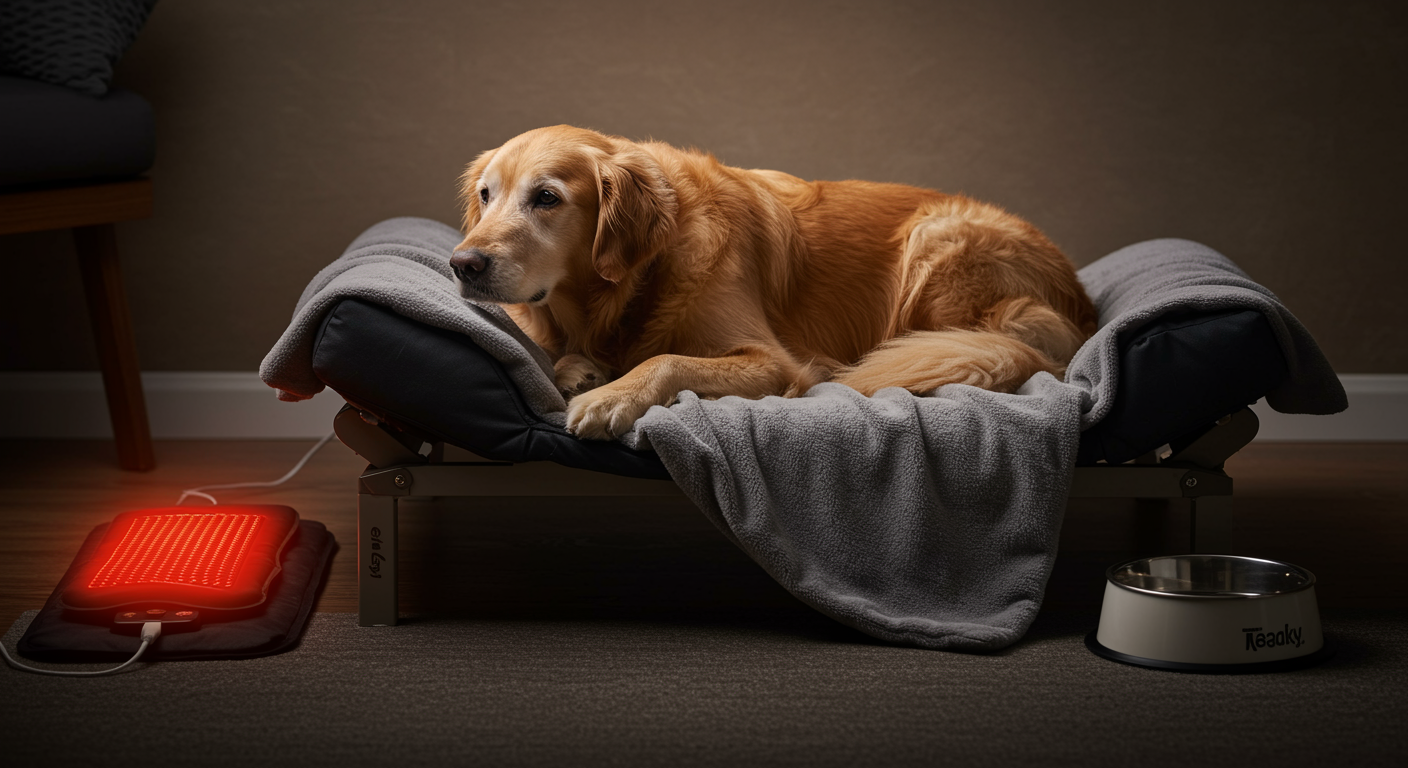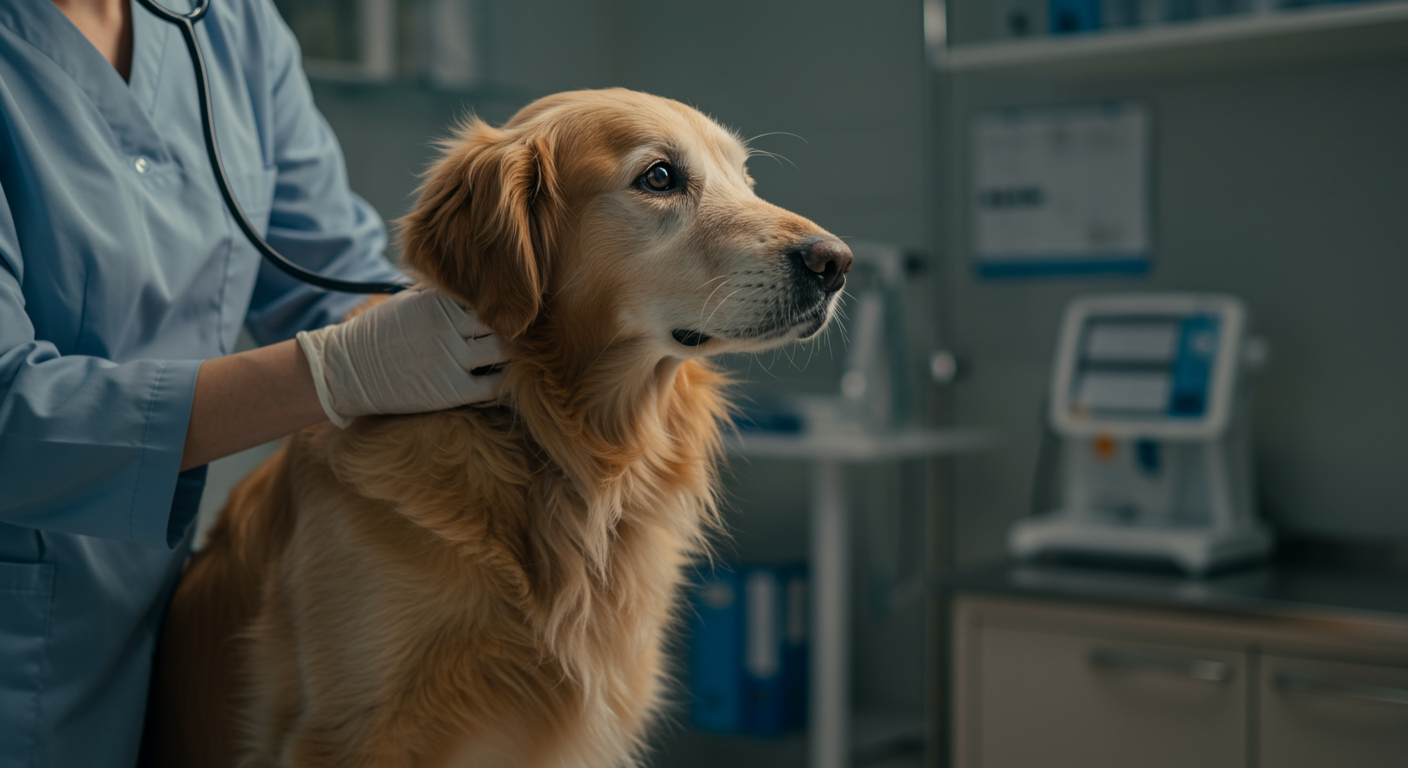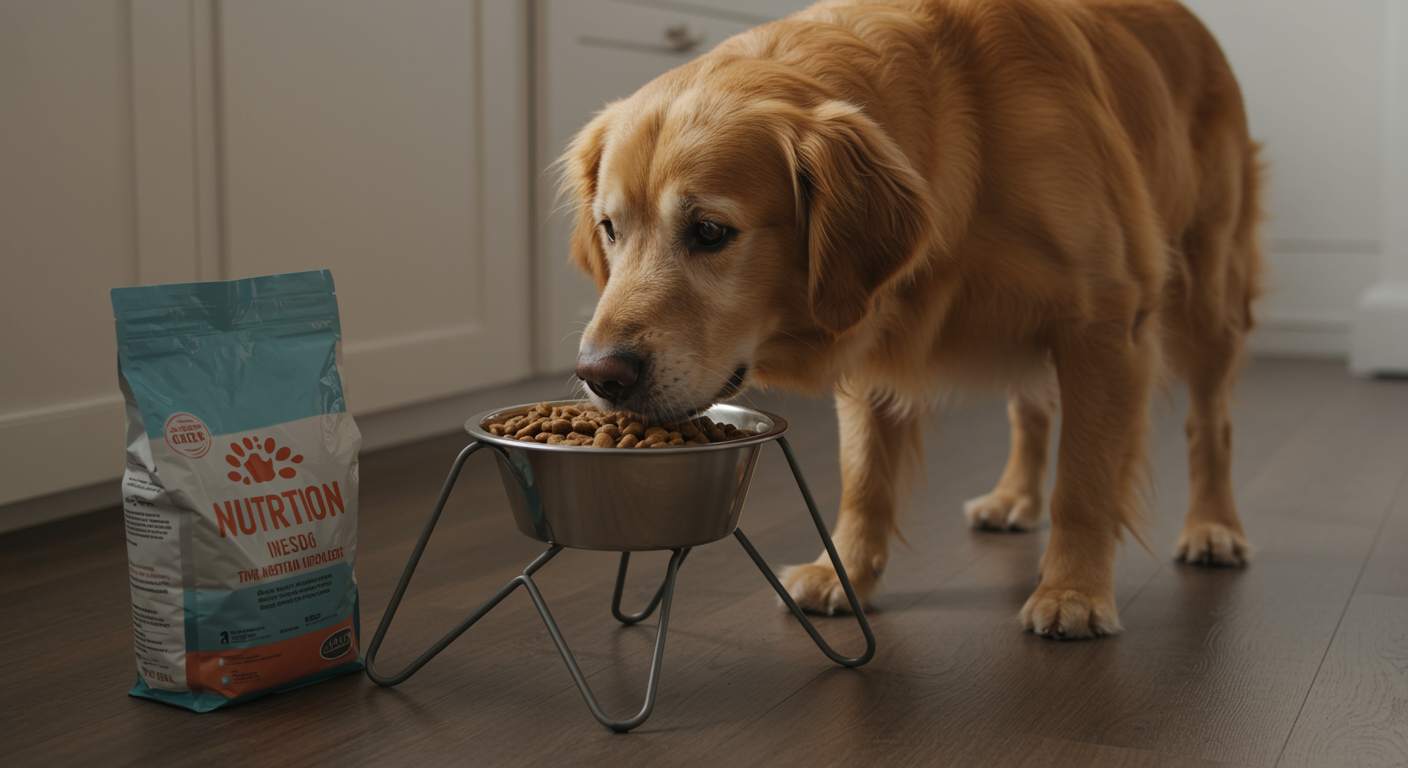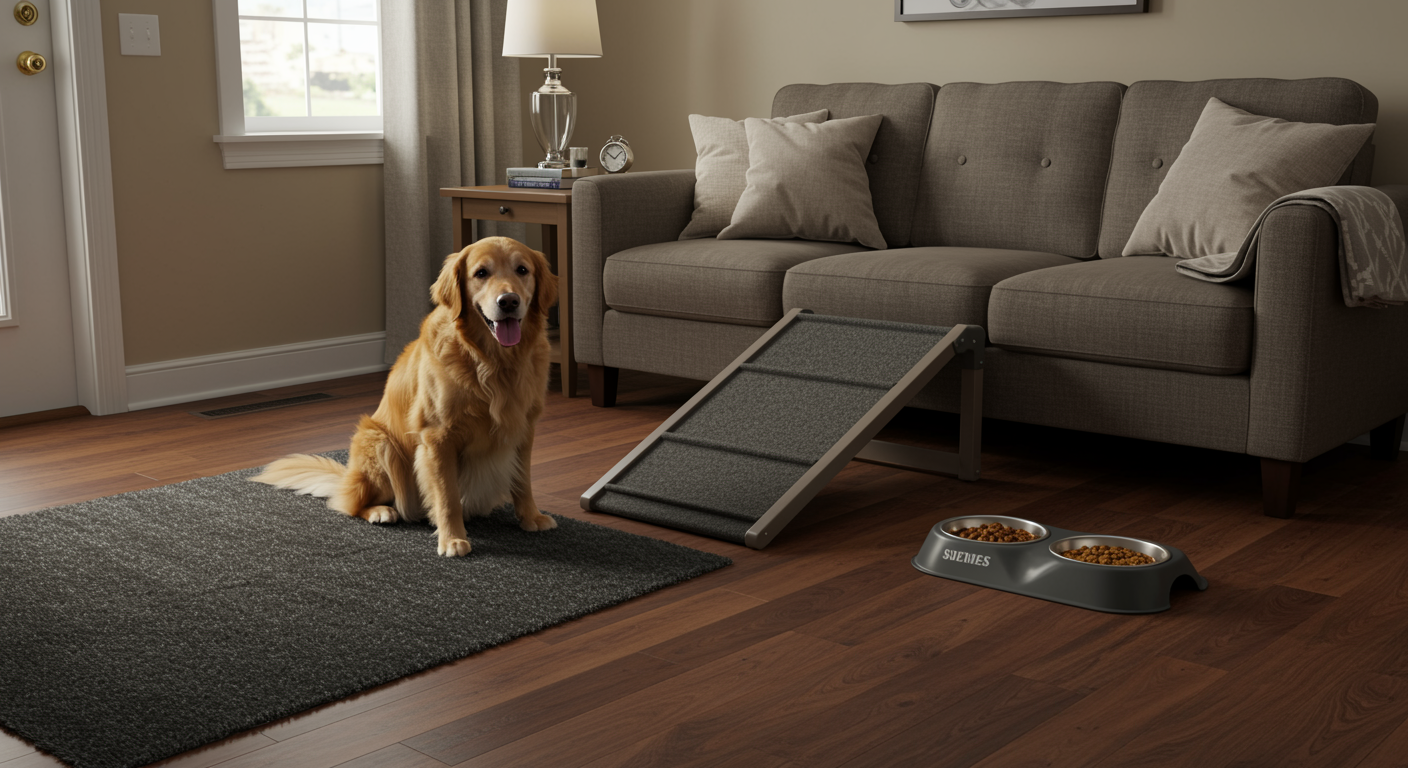As Golden Retrievers gracefully transition into their senior years, their comfort, mobility, and overall quality of life become increasingly dependent on thoughtful environmental adaptations. Among these, choosing the perfect bed stands out as one of the most impactful decisions owners can make. For an aging Golden Retriever, a bed is more than just a place to sleep; it is a sanctuary that supports aching joints, provides warmth and security, and helps manage the physical challenges that come with age. Understanding the specific needs of senior dogs—from arthritic discomfort to decreased mobility and altered sleep patterns—is paramount in selecting a bed that truly enhances their golden years.
The importance of an appropriate bed for a senior Golden Retriever extends far beyond simple luxury. A well-chosen bed can significantly alleviate pain from conditions like arthritis and hip dysplasia, improve circulation, reduce the risk of pressure sores, and provide a sense of security crucial for dogs experiencing sensory or cognitive decline. Conversely, an inadequate bed can exacerbate existing health issues, lead to restlessness, and diminish the restorative quality of sleep essential for an aging body.
Golden Retrievers, known for their loyal and affectionate nature, often prefer to remain close to their human families. This means their bed should not only offer superior physical support but also integrate seamlessly into the home environment, allowing them to remain a cherished part of daily life. The goal is to select a bed that accommodates their evolving physical needs while nurturing their emotional well-being, ensuring every moment of rest is a moment of true comfort and peace.
Understanding Senior Dog Sleep Needs
Physiological Changes Affecting Sleep
Aging profoundly affects a Golden Retriever’s physiology, directly impacting their sleep patterns and comfort requirements.
Joint and Muscle Discomfort: Arthritis, hip dysplasia, and general muscle stiffness are prevalent in senior Golden Retrievers. Lying on hard surfaces or in unsupported positions exacerbates this discomfort, leading to restless sleep and difficulty getting up. An appropriate bed must cushion pressure points and provide firm, even support.
Reduced Circulation: As dogs age, circulation can become less efficient. Prolonged pressure on certain areas, especially bony prominences, can restrict blood flow, increasing the risk of pressure sores. A supportive bed helps distribute weight evenly, promoting better circulation.
Temperature Regulation Difficulties: Senior dogs may struggle more with regulating their body temperature, becoming overly sensitive to cold drafts or prone to overheating. Their bed needs to offer insulation in winter and breathability in summer.
Decreased Mobility: Getting up, lying down, and changing positions become more challenging. A bed with a low entry point or one that provides assistance in rising is crucial.
Impact of Health Conditions on Sleep
Several common health conditions in senior Golden Retrievers directly influence their bedding needs.
- Arthritis: Requires excellent orthopedic support to relieve pressure on inflamed joints.
- Hip/Elbow Dysplasia: Needs firm, contouring support to stabilize these susceptible joints.
- Incontinence: Demands waterproof liners and easily washable covers to maintain hygiene and prevent odors.
- Cognitive Dysfunction: Benefits from a familiar, secure, and easily accessible bed in a consistent location to reduce confusion and anxiety.
- Circulatory Issues: Requires even weight distribution to prevent pressure sores and promote healthy blood flow.
- Diabetes: Can cause increased thirst and urination, highlighting the need for easy-to-clean and waterproof features in bedding.
Behavioral Changes Related to Sleep
Senior Golden Retrievers often exhibit behavioral shifts around sleep that inform bed choice.
- Increased Sleep Time: They sleep more overall, making the quality of their resting hours even more critical.
- Restlessness: May change positions frequently due to discomfort, indicating a need for better cushioning and support.
- Seeking Warmth/Coolness: Tend to seek out warmer spots (e.g., sunny patches) or cooler spots (e.g., tile floors), suggesting a need for temperature-regulating bedding options.
- Difficulty Settling: May circle excessively or pant before lying down, which can indicate pain or discomfort with their current sleeping surface.
Key Features of an Ideal Senior Dog Bed
The perfect bed for an aging Golden Retriever combines several critical features designed to maximize comfort, support, and practicality.
| Feature | Importance for Senior Golden Retrievers | Benefits Provided | Considerations for Selection |
|---|---|---|---|
| Orthopedic Support | Crucial for joint pain/arthritis | Alleviates pressure points, supports spine, reduces pain | Memory foam, therapeutic foam layers, high density |
| Low Entry/Accessibility | Essential for limited mobility | Easy for getting in/out, prevents strain/injury | Beds with minimal lip, ramps available for high beds |
| Size & Shape | High for comfort/stretch | Allows full extension, supports curled positions | Measure dog’s length (nose to tail base) + 6-12″ |
| Durable & Easy Clean | High for hygiene/longevity | Protects inner foam, prevents odors, easy maintenance | Removable/washable cover, waterproof liner |
| Temperature Regulating | Moderate-High for comfort | Keeps dog cool in summer, warm in winter | Gel-infused foam, breathable fabrics, heated inserts |
| Non-Slip Base | Essential for safety | Prevents bed from shifting, reduces fall risk | Rubberized or textured bottom |
| Bolsters/Headrests | Moderate for neck/head support | Offers a sense of security, promotes comfortable head rest | Raised edges around perimeter |
1. Support and Orthopedic Qualities
This is arguably the most important feature. Senior Golden Retrievers need a bed that cradles their body, distributes their weight evenly, and provides firm support to their joints and spine.
- Memory Foam: Conforms to the dog’s body, providing superior pressure point relief and spinal alignment. It regains its shape, preventing flat spots.
- Therapeutic Foam: Often a blend of orthopedic foam with varied densities, offering robust support and comfort.
- High-Density Foam: Provides better support and durability than softer, lower-density foams that can flatten over time.
2. Accessibility
A senior dog should be able to get in and out of their bed with minimal effort and no pain.
- Low Entry Point: Beds with a minimal lip are ideal.
- Ramps or Steps: For higher beds, especially those alongside a human bed, a small ramp or pet steps can provide easy access.
3. Size and Shape
The bed must be large enough to allow your Golden Retriever to stretch out completely in any position without body parts hanging off. It should also accommodate their preferred sleeping style (curled up, stretched out).
- Measure Your Dog: Measure from nose to tail base, and add 6-12 inches for ample stretching room.
- Rectangular vs. Round: Rectangular beds are often best for Golden Retrievers who like to stretch, while some may appreciate the security of a round or oval bolster bed for curling up.
4. Durability and Easy Cleaning
Hygiene is paramount for senior dogs.
- Removable, Washable Cover: Essential for easy cleaning of accidents, dirt, and pet dander.
- Waterproof Liner: Protects the inner foam from accidents, extending the bed’s life and preventing odors.
- Durable Fabric: Choose fabrics that withstand frequent washing and everyday wear without pilling or tearing.
5. Temperature Regulation
- Cooling Features: Gel-infused memory foam or breathable mesh covers can help hot sleepers regulate temperature in warmer climates or seasons.
- Warming Features: Self-warming materials or beds with integrated heating elements (ensure safety certifications) are excellent for arthritic dogs in colder environments.
6. Non-Slip Base
A bed that shifts or slides when a senior dog tries to get in or out can be a fall hazard. A rubberized or textured bottom ensures stability.
7. Bolsters and Headrests
Many Golden Retrievers enjoy resting their heads on a raised edge. Bolsters provide this support and can also offer a sense of security, mimicking a den.
Types of Beds for Senior Golden Retrievers
The market offers a variety of bed types, each with specific advantages for senior Golden Retrievers.
| Bed Type | Key Advantages for Seniors | Best Suited For | Considerations |
|---|---|---|---|
| Orthopedic Memory Foam | Superior joint support, pressure relief, spinal alignment | Arthritis, hip/elbow dysplasia, large/heavy dogs | Can be warm, ensure high-density foam |
| Bolster Beds | Head/neck support, sense of security | Dogs who like to lean/curl, moderate joint issues | Ensure central cushion is still orthopedic |
| Heated Beds | Soothes stiff joints, provides warmth | Arthritic dogs, cold climates, thin-coated seniors | Safety certification (auto-shutoff), chew-proof cord |
| Cooling Beds | Regulates body temperature in heat | Hot sleepers, warm climates, dense coats | Can be heavy, may require power for some models |
| Waterproof Beds | Essential for incontinence, easy clean | Dogs with bladder issues, messy sleepers | Usually features a waterproof liner for inner foam |
| Elevated Beds | Air circulation, pressure relief, easy access | Outdoor use, specific orthopedic needs, airflow | Less direct cushioning, ensure stability |
1. Orthopedic Memory Foam Beds
These are widely considered the gold standard for senior dogs due to their exceptional pressure relief and support. They contour to the dog’s body, alleviating stress on joints and providing even weight distribution.
- Best for: Dogs with severe arthritis, hip/elbow dysplasia, or those recovering from orthopedic surgery.
- Look for: High-density, medical-grade memory foam. Some include a base layer of firm foam for added stability.
2. Bolster Beds
These beds feature raised edges around the perimeter, providing a comfortable headrest and a sense of security. If the central cushion is also orthopedic, they can be an excellent choice.
- Best for: Dogs who like to curl up, lean against something, or rest their head.
- Look for: A robust, supportive bolster that won’t flatten, and an orthopedic base cushion.
3. Heated Beds
Therapeutic warmth can do wonders for stiff, arthritic joints, improving circulation and reducing discomfort, especially in colder climates.
- Best for: Dogs with arthritis, muscle stiffness, or those who get cold easily.
- Look for: Safety certifications (e.g., ETL listed), automatic shut-off features, and chew-resistant cords.
4. Cooling Beds
For Golden Retrievers who run hot or live in warmer climates, a cooling bed can prevent overheating and provide comfort.
- Best for: Dogs with dense coats, those prone to overheating, or during summer months.
- Look for: Gel-infused foam, breathable mesh covers, or elevated designs that allow airflow.
5. Waterproof/Incontinence Beds
Accidents can happen with senior dogs. A bed designed with waterproof materials or liners protects the foam and simplifies cleanup.
- Best for: Dogs with incontinence issues or those who are prone to vomiting or messy eating.
- Look for: A zippered, removable, machine-washable outer cover and a fully waterproof internal liner protecting the foam.
6. Elevated Beds
These beds lift the dog off the floor, promoting air circulation underneath, which can be beneficial for cooling. They also offer consistent, even support.
- Best for: Outdoor use, dogs who overheat, or those who prefer a firmer sleeping surface.
- Look for: Sturdy frame, durable mesh fabric, and a low enough height for easy access. Often combined with a soft topper for added comfort.
Factors to Consider When Choosing
Making the right choice involves a careful evaluation of your dog’s individual needs and your home environment.
1. Specific Health Conditions
- Arthritis/Dysplasia: Prioritize high-density orthopedic memory foam.
- Incontinence: Essential for waterproof liners and easily washable covers.
- Circulatory Issues: Focus on pressure-relieving foam and even weight distribution.
- Vision/Hearing Impairment: A consistent bed location and a bed that is easy to find and access reduces anxiety.
- Diabetes: Monitor for weight changes and ensure the bed is easy to clean in case of accidents due to increased urination.
2. Sleeping Style
Observe how your Golden Retriever typically sleeps.
- Stretcher: If they sprawl out, a large rectangular or oval orthopedic bed is ideal.
- Curler: If they prefer to curl into a tight ball, a round bolster bed might provide more security and comfort.
- Leaning/Propping: A bolster bed is good if they like to lean their head on a pillow or armrest.
3. Temperature Preference
- Hot Sleeper: Opt for cooling gel foam, breathable fabrics, or an elevated bed.
- Cold Sleeper: Consider self-warming materials, a heated bed, or a thick orthopedic foam bed for insulation.
4. Size and Weight of Your Golden Retriever
A bed must adequately support your dog’s size and weight. A bed that is too thin or too soft will flatten and offer no support.
- Weight: Heavy dogs require denser foam to prevent the bed from flattening over time.
- Size: Ensure ample space for stretching out, as discussed.
5. Location in Home
Consider where the bed will be placed.
- Drafts: Avoid placing a bed in a drafty area, especially for cold-sensitive seniors.
- High-Traffic Areas: A quieter spot might be better for an easily startled senior.
- Proximity to Family: Golden Retrievers thrive on companionship, so a bed near family activity is usually preferred.
- Flooring: A non-slip base is crucial on hard floors.
6. Budget
While cost is a factor, view a quality orthopedic bed as an investment in your senior Golden Retriever’s health and comfort. Cheaper beds often flatten quickly, offering little support and needing frequent replacement.
Materials and Construction
Understanding the materials used in dog beds helps in making an informed choice for durability, support, and ease of cleaning.
Fill Materials
| Fill Material | Support Level | Durability | Maintenance | Best For |
|---|---|---|---|---|
| Memory Foam | Excellent (contours) | High | Spot clean, removable cover | Arthritis, pressure relief, spinal support |
| Therapeutic Foam | Very Good (firm) | High | Spot clean, removable cover | General orthopedic support, heavy dogs |
| Shredded Memory Foam | Moderate (moldable) | Moderate-High | Fluff to redistribute | Dogs who like to nest, lighter joint issues |
| Polyester Fiberfill | Low (flattens) | Low | Regular fluffing | Non-senior dogs, light cushioning (not support) |
- Memory Foam: As discussed, excellent for conforming to the body and relieving pressure. Look for higher density (e.g., 3-5 lbs/cu ft).
- Therapeutic Foam (High-Density Foam): Provides firm, even support throughout the bed, ideal for heavier dogs.
- Shredded Memory Foam: Offers a “nesting” feel and is moldable, but can clump. Good if combined with a solid foam base.
- Polyester Fiberfill: Common in cheaper beds, but quickly flattens and offers little orthopedic support. Avoid for seniors.
Cover Fabrics
- Microfiber/Faux Fur: Soft, cozy, and often machine washable. Good for warmth and comfort.
- Canvas/Denim: Durable, chew-resistant, and good for active seniors who are not prone to excessive nesting.
- Waterproof Fabrics: Essential for incontinence. Often a nylon or polyester blend.
- Cooling Fabrics: Some covers are made with specialized cooling fibers that dissipate heat.
Base
- Non-Slip Rubberized Bottom: Crucial for safety on hard floors.
- Durable Fabric: The bottom should be made of a sturdy material to prevent tearing.
Making the Transition to a New Bed
Even the perfect new bed might be met with skepticism by a senior Golden Retriever who is set in their ways or anxious about change.
- Gradual Introduction: Place the new bed in a familiar spot. Let your dog explore it at their own pace.
- Familiar Scents: Place an old blanket or toy with their scent on the new bed to make it feel more familiar.
- Positive Reinforcement: Praise and reward your dog with treats when they investigate or lie on the new bed.
- Make it Inviting: Encourage them gently. You might even lie on it yourself for a moment to show it’s safe and comfortable.
- Patience: Some dogs adapt immediately, others take days or weeks. Avoid forcing them, which can create negative associations.
Maintenance and Longevity
Proper maintenance ensures the bed remains supportive, hygienic, and comfortable for as long as possible.
- Regular Cleaning: Wash the removable cover frequently according to manufacturer instructions. Vacuum the bed regularly to remove fur and dander.
- Spot Cleaning: Promptly clean any accidents or spills to prevent odors and stains from setting in.
- Check for Wear and Tear: Regularly inspect the bed for flattened spots, tears, or damage to the foam. Address small issues before they become major problems.
- When to Replace: Even high-quality orthopedic beds will eventually show signs of wear. If the foam is permanently compressed, no longer providing adequate support, or if the bed retains odors, it’s time for a replacement. A good orthopedic bed should last several years with proper care.
Advanced Comfort Solutions
Beyond the bed itself, consider additional items to maximize comfort.
- Bedding Toppers:
- Cooling Pads: Gel-filled pads can be placed on top of the bed for hot sleepers.
- Heating Pads: Designed for pets, these can offer targeted warmth to specific painful areas.
- Waterproof Mats: An extra layer of protection for incontinence.
- Ramps for Bed Access: If your senior Golden Retriever sleeps on a human bed or an elevated dog bed, a gentle ramp can make access safer and easier, reducing strain on their joints.
- Multiple Bed Options: Provide several comfortable resting spots throughout the house. This allows your dog to choose based on their current comfort, temperature preference, or proximity to family.
- Proximity to Family: While physical support is key, for Golden Retrievers, emotional comfort is also paramount. Place their bed in a common family area where they feel included and secure.
Conclusion: A Foundation for Golden Comfort
Choosing the perfect bed for a senior Golden Retriever is a profound act of care that directly impacts their daily comfort, mobility, and emotional well-being throughout their golden years. It represents an investment in their quality of life, demonstrating an understanding of their evolving needs and a commitment to ensuring their comfort during a time when physical challenges become more prevalent.
The ideal bed goes beyond mere cushioning; it provides orthopedic support that alleviates pain from arthritis and hip dysplasia, ensures easy accessibility for reduced mobility, and offers hygienic solutions for incontinence. By carefully considering factors such as fill materials, size, temperature regulation, and ease of cleaning, owners can select a sanctuary that transforms rest into a restorative experience.
Success in this choice leads to more peaceful sleep, easier movement, reduced pain, and a happier, more engaged senior Golden Retriever. The right bed empowers them to maintain their dignity and confidence, allowing them to participate more fully in family life and to continue enjoying the cherished moments that define their special bond with you.
Your dedication to finding the perfect bed for your senior Golden Retriever underscores your deep love and commitment. Through this thoughtful adaptation, you provide not just a place to sleep, but a cornerstone of comfort that supports their health and happiness, ensuring that their golden years are truly golden—filled with peace, comfort, and the enduring warmth of your companionship.

Rafael Souza is a digital marketing strategist and lifelong dog enthusiast. Passionate about Golden Retrievers, he shares practical, research-based tips to help owners provide healthier and happier lives for their furry companions.






1 thought on “How to Choose the Perfect Bed for a Senior Golden Retriever”